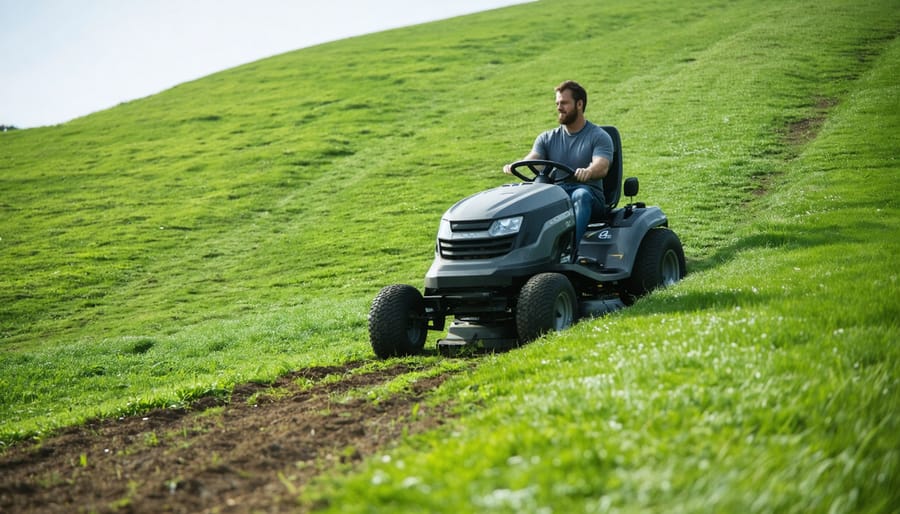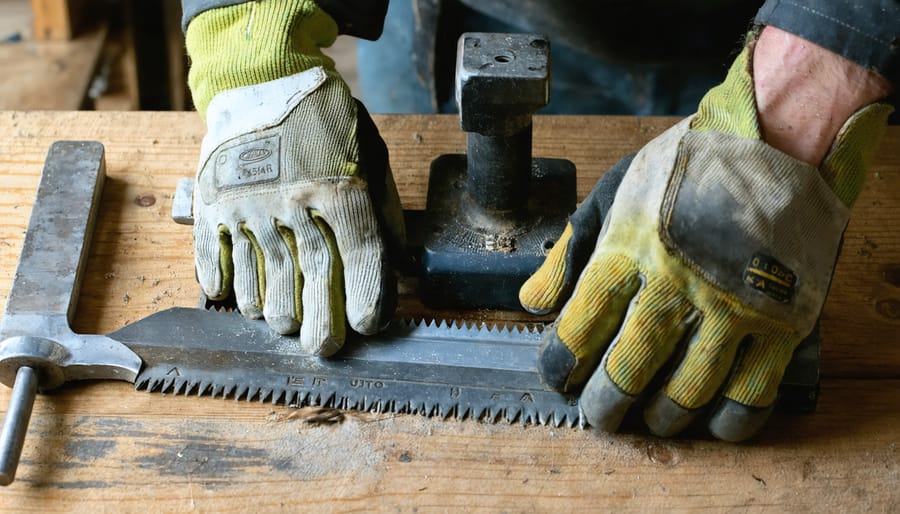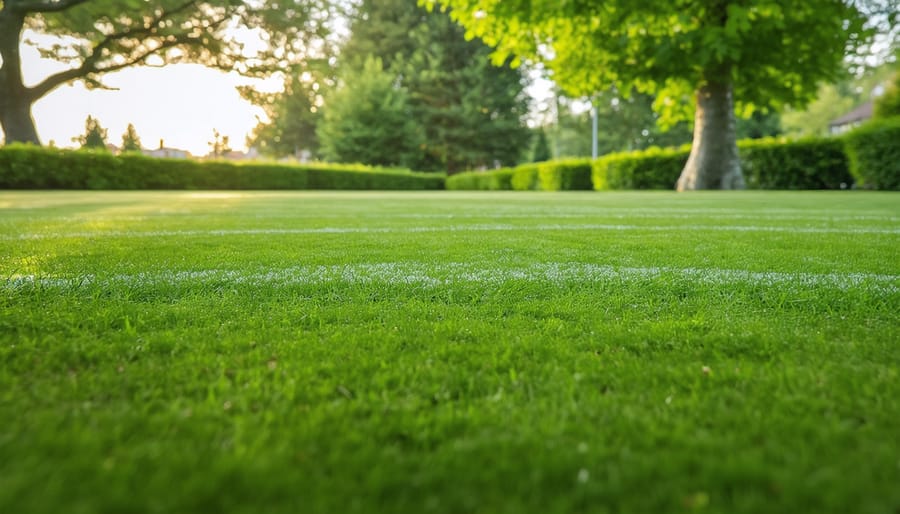Conquering uneven terrain demands more than just any different types of riding mowers – it requires a specialized machine built for challenging landscapes. Hills, bumps, and irregular surfaces pose unique challenges that can make standard mowing equipment dangerous or ineffective. A properly equipped riding mower with features like a lower center of gravity, wide-set wheels, and advanced traction control transforms this daunting task into a manageable, even enjoyable experience. Whether you’re maintaining a sprawling hillside property or navigating around obstacles in your yard, choosing the right mower not only ensures your safety but also delivers the pristine cut your lawn deserves. Understanding the key features that make a riding mower suitable for uneven terrain will help you make an informed investment that meets your specific landscaping needs while protecting both you and your property.
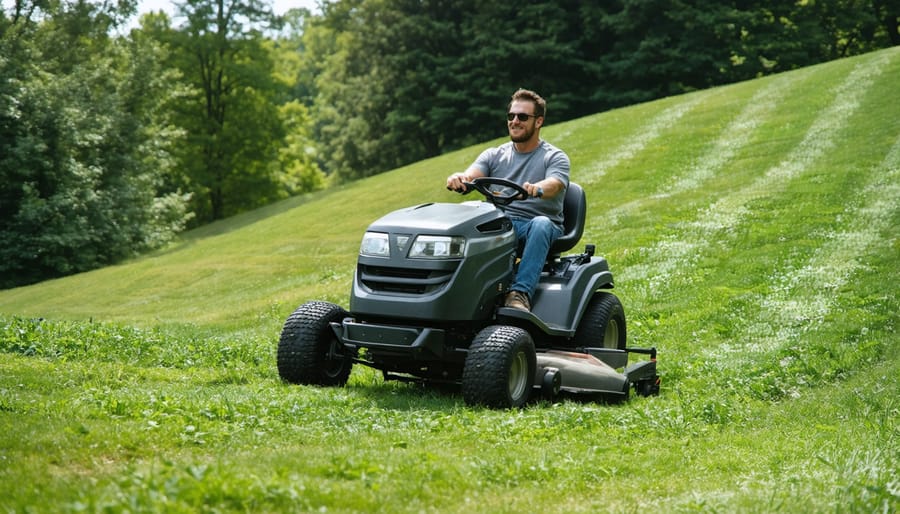
Essential Features for Tackling Uneven Ground
Deck Design and Cutting Height Adjustment
A floating deck design is crucial for achieving a clean cut on uneven terrain. These decks move independently from the mower’s main body, allowing them to follow the ground’s contours without scalping your lawn. Most quality mowers feature anti-scalp wheels on the deck, which act as guides and prevent the blades from digging into raised areas of your yard.
The height adjustment mechanism is equally important when dealing with irregular surfaces. Look for mowers with easy-to-use adjustment levers that offer multiple cutting positions. The best models provide at least 6-8 height settings, typically ranging from 1 to 4 inches. Some advanced models even feature deck-lift assist systems, making it easier to raise and lower the deck as needed.
For maximum effectiveness, your deck should have sufficient ground clearance and sturdy deck wheels that can handle bumps and dips. Premium models often include washout ports for easy cleaning and maintenance of the deck underside. Remember to regularly check and adjust your deck level to ensure even cutting across your entire lawn, particularly important when dealing with challenging terrain.
Transmission and Power Systems
When tackling uneven terrain, your mower’s transmission system plays a crucial role in maintaining control and stability. Hydrostatic transmissions are often the top choice, offering smooth speed control and excellent transmission performance on slopes. These systems allow for seamless speed adjustments without shifting gears, which is particularly valuable when navigating challenging landscapes.
For maximum maneuverability, consider exploring zero-turn mower capabilities, as these machines excel at handling varied terrain while providing precise control. However, if you’re dealing with steeper slopes, a gear-driven transmission might be more suitable due to its consistent power delivery and enhanced braking capability.
The power system should match your terrain’s demands. Look for engines with at least 18-24 horsepower for hilly areas. Many modern mowers feature automatic throttle control, which adjusts power output based on terrain difficulty, helping maintain consistent cutting performance while preserving fuel efficiency. Remember that more power typically means better hill-climbing ability and improved stability on challenging surfaces.
Tire and Wheel Configuration
The right tire and wheel configuration is crucial for safely mowing uneven terrain. Large rear tires, typically 20-24 inches in diameter, provide better traction and stability on slopes and rough ground. Look for deep-tread tires with aggressive patterns that grip the soil without causing damage to your lawn. For the front wheels, opt for smaller sizes (around 15-16 inches) with pivoting capabilities to maintain maneuverability.
Multi-terrain tires with reinforced sidewalls offer excellent puncture resistance and durability. Some models feature turf-saver tires that minimize lawn damage while maintaining grip. For extremely challenging terrain, consider mowers with wide-stance wheels that increase stability and reduce the risk of tipping.
Tire pressure is equally important – maintain it according to manufacturer specifications, typically between 10-14 PSI. This ensures optimal ground contact and prevents tire damage while navigating bumpy areas.
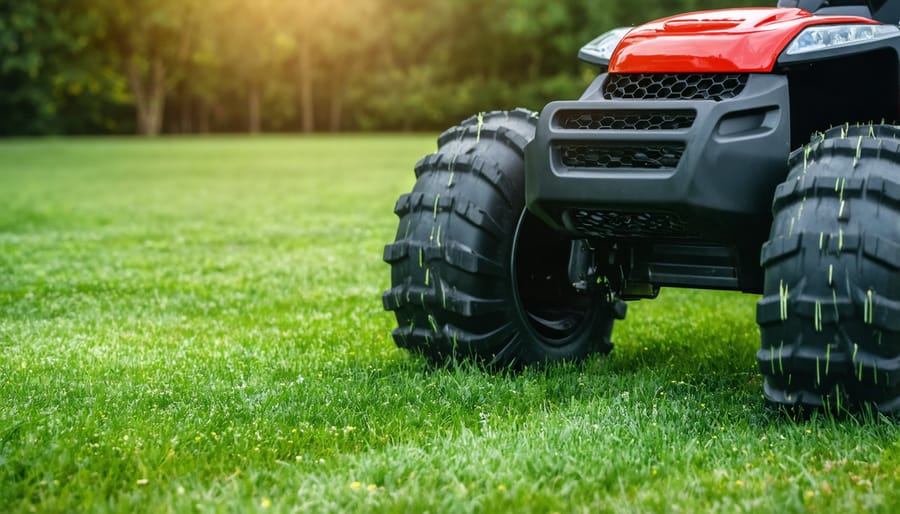
Stability and Safety Features
Roll-Over Protection Systems (ROPS)
When it comes to mowing on uneven terrain, safety should always be your top priority, and that’s where Roll-Over Protection Systems (ROPS) come into play. These crucial safety features consist of a sturdy frame or roll bar designed to create a protective zone around the operator in case the mower tips over.
Most modern riding mowers come equipped with ROPS, which can be either fixed or foldable. While foldable ROPS offer convenience when storing your mower or passing under low branches, remember to always keep them in the upright position while mowing sloped or uneven areas.
The effectiveness of ROPS is significantly enhanced when used in conjunction with a seatbelt. Always wear your seatbelt when operating on slopes, as it keeps you within the protected zone if a rollover occurs. Some newer models even feature automatic shut-off systems that engage when the operator leaves the seat.
For maximum protection, look for mowers with ROPS that meet or exceed OSHA standards. While it might be tempting to remove or fold down the ROPS for convenience, doing so eliminates your primary safety defense against rollover accidents.
When purchasing a riding mower for uneven terrain, consider ROPS as a non-negotiable feature. The peace of mind and protection it provides far outweigh any minor inconveniences in terms of storage or maneuverability. Remember, no perfectly manicured lawn is worth compromising your safety.
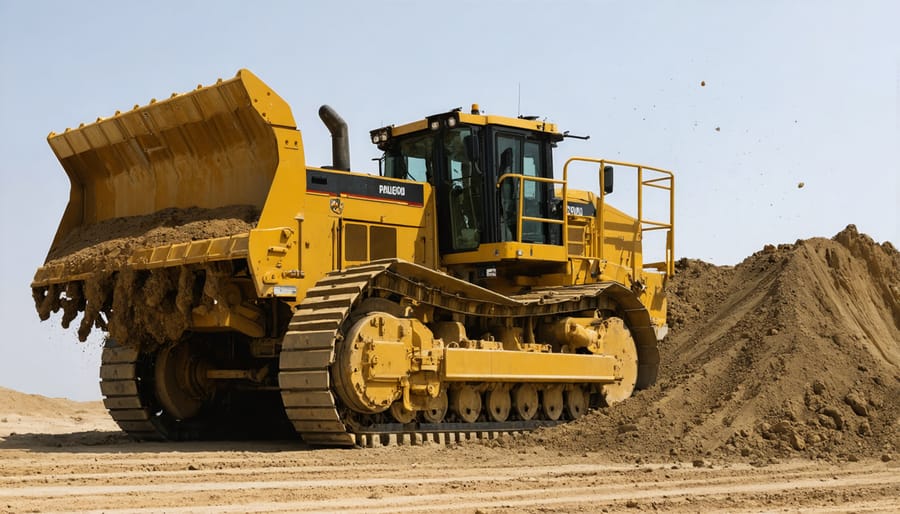
Weight Distribution and Balance
When tackling uneven terrain, proper weight distribution and balance are crucial for both safety and performance. The best riding mowers for rough landscapes feature a low center of gravity and wide wheel base, which work together to prevent tipping on slopes and maintain stability during operation.
Look for models with balanced weight distribution between the front and rear axles. Many premium mowers achieve this through strategic placement of the engine and fuel tank. Some manufacturers add counterweights or adjustable ballast systems that let you fine-tune the balance based on your specific terrain challenges.
The deck suspension system also plays a vital role in maintaining stability. A floating deck design follows ground contours more effectively, while anti-scalp wheels help prevent the deck from digging into raised areas. Additionally, larger rear tires with aggressive tread patterns provide better traction and weight distribution across uneven surfaces.
For maximum stability, consider mowers with articulating frames or pivot points that allow the machine to flex and conform to terrain variations while keeping all wheels in contact with the ground. This feature is especially valuable when mowing across hillsides or over rolling landscapes.
Braking Systems
When tackling uneven terrain, a reliable braking system isn’t just a feature – it’s a necessity. Most riding lawn mowers come equipped with two primary brake types: mechanical disc brakes and hydrostatic braking systems. Mechanical disc brakes provide direct stopping power and are particularly effective on steeper slopes, offering precise control when you need to stop or slow down.
Hydrostatic braking systems work in conjunction with the mower’s transmission, providing smooth deceleration and added control when navigating challenging landscapes. These systems are especially helpful when maneuvering around obstacles or making controlled descents on hills.
For maximum safety on slopes, look for models featuring both regular brakes and a parking brake system. The parking brake is crucial when you need to stop on an incline or during maintenance. Some advanced models also include automatic hill-assist braking, which prevents the mower from rolling backward when stopping on slopes.
Remember to regularly inspect your mower’s brake pads and cables, ensuring they’re in good condition. Worn brake components can significantly compromise your safety, especially when working on uneven ground.
Comfort and Control Features
Seat Suspension Systems
When tackling uneven terrain, your comfort as the operator becomes crucial for both safety and efficiency. Modern riding lawn mowers feature sophisticated suspension systems for comfort that can transform a bumpy ride into a smooth mowing experience. These systems typically combine spring-loaded seat mechanisms with shock absorbers to minimize the impact of rough ground.
High-end models often include adjustable suspension settings that let you customize the ride based on your weight and terrain conditions. Look for seats with lumbar support and vibration-dampening technology, which help reduce operator fatigue during extended mowing sessions. Some premium models even feature air-ride seats, similar to those found in commercial trucks, providing optimal comfort on particularly challenging landscapes.
The seat’s placement and mounting system also play vital roles in comfort. Forward-mounted seats tend to experience less bounce than rear-mounted ones, while seats with isolation mounts help separate you from the mower’s frame vibrations. Many manufacturers now incorporate additional padding and ergonomic design features that distribute your weight evenly, preventing pressure points during long mowing sessions.
For the best results, consider models with full-suspension seats that offer both vertical and horizontal isolation. These systems work in tandem with the mower’s deck suspension to provide a stable, comfortable ride even when navigating over roots, rocks, and other obstacles.
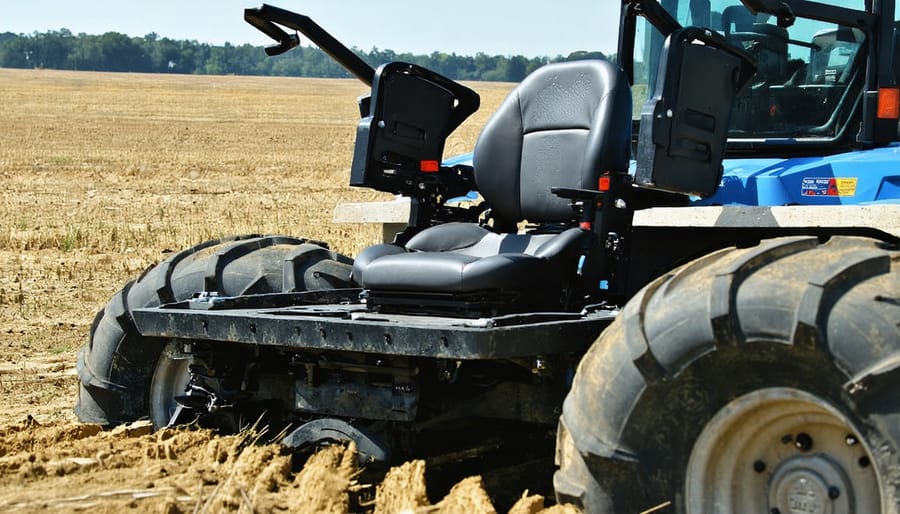
Steering and Control Systems
When tackling uneven terrain, having responsive and reliable steering is crucial for both safety and efficiency. Most riding mowers for rough landscapes come equipped with either a traditional steering wheel or lap-bar controls. The steering wheel design offers familiar handling similar to a car, making it an excellent choice for beginners and those who prefer conventional control methods.
Lap-bar controls, while requiring a brief learning curve, provide exceptional maneuverability and precise control over your mower. These dual levers allow for zero-turn capability, helping you navigate around obstacles and manage tight spaces with ease. Some advanced models feature power steering systems that reduce operator fatigue and provide better handling on slopes and bumpy ground.
The control layout should be intuitive and easily accessible from the operator’s seat. Look for models with ergonomically positioned speed control pedals, cutting height adjustments, and emergency shut-off switches. Many modern mowers include safety features like automatic blade disengagement when reversing and seat pressure sensors that stop the engine if you leave the seat.
For enhanced stability on uneven ground, consider models with differential steering that allows the wheels to turn at different speeds when cornering. This feature prevents turf damage and ensures smoother operation on challenging terrain. Some premium models also offer adjustable steering sensitivity settings, letting you customize the response to match your comfort level and the specific conditions of your landscape.
Maintenance Considerations
Regular Inspection Points
To keep your riding mower performing optimally on uneven terrain, establish a regular inspection routine focusing on key components. Start with the tires, checking pressure levels and wear patterns weekly – proper inflation is crucial for grip and stability on slopes. Examine the deck height adjustment mechanism to ensure it moves smoothly and maintains your chosen cutting height across bumpy ground.
Pay special attention to the steering system and wheel alignment, as rough terrain can impact these components more severely. Regular lubrication of moving parts helps enhance mower versatility and prevents premature wear. Check the blade condition monthly, looking for signs of damage or dullness that could affect cutting performance.
Don’t forget to inspect the engine mounts and frame for any loose bolts or developing cracks – these issues can worsen quickly when navigating challenging landscapes. The brake system requires particular attention, as it’s your primary safety feature on slopes. Finally, keep the deck clean and free from grass buildup, which can affect both cutting quality and the mower’s handling on uneven ground.
Preventive Maintenance Schedule
When mowing uneven terrain, your riding mower faces extra stress, making regular maintenance crucial. Here’s a timeline to keep your machine running smoothly:
Weekly (or every 8-10 hours of operation):
– Check tire pressure and adjust as needed
– Clean deck undersides to prevent grass buildup
– Inspect belts for wear or damage
– Check and tighten any loose bolts
Monthly (or every 25 hours):
– Change engine oil
– Clean or replace air filter
– Lubricate all moving parts and wheel bearings
– Check blade sharpness and balance
Quarterly:
– Replace spark plugs
– Clean fuel system
– Inspect brake system
– Check transmission fluid levels
Annually:
– Professional service inspection
– Replace fuel filter
– Deep clean entire machine
– Check and adjust deck level
For rough terrain use, consider more frequent inspections of suspension components and steering mechanisms. Keep detailed maintenance records and always address unusual noises or vibrations immediately. Remember, preventive care extends your mower’s life and ensures safer operation on challenging landscapes.
Environmental Impact
Fuel Efficiency Features
When it comes to tackling uneven terrain, fuel efficiency becomes even more crucial as your mower works harder to navigate challenging landscapes. Modern riding mowers come equipped with several features that help optimize fuel consumption, saving both money and the environment.
Many current models feature advanced fuel injection systems that precisely control the fuel-air mixture, ensuring optimal combustion even when the engine load varies while climbing hills or navigating dips. Smart throttle technology automatically adjusts engine speed based on terrain conditions, preventing unnecessary fuel consumption during lighter workloads.
Eco modes have become increasingly common, offering a balance between power and efficiency. These settings are perfect for maintaining level sections of your lawn while conserving fuel. Some manufacturers have introduced hybrid models that combine traditional gas engines with electric motors, providing extra power for difficult terrain while maintaining excellent fuel economy.
Fuel tank capacity is another important consideration. Larger tanks mean fewer refueling stops, but they also add weight. Look for mowers with fuel gauges and low-fuel indicators to help you plan your mowing sessions effectively. Many newer models also feature anti-siphon fuel caps and fuel stabilizer systems that help prevent fuel degradation during storage periods.
To maximize efficiency, consider using the recommended grade of fuel and keeping up with regular maintenance schedules. A well-maintained engine running clean fuel will always deliver the best fuel economy, especially when tackling challenging terrain.
Eco-Friendly Operation Tips
Operating your riding mower with environmental consciousness doesn’t just benefit the planet – it also improves your lawn’s health and reduces maintenance costs. Start by maintaining optimal blade height; taller grass promotes deeper root growth and natural weed suppression, reducing the need for chemical treatments. Aim to keep your grass at least 3 inches tall during the growing season.
Consider implementing a grasscycling approach by leaving grass clippings on the lawn. These natural clippings decompose quickly, returning valuable nutrients to the soil and reducing the need for synthetic fertilizers. When mowing uneven terrain, resist the urge to cut wet grass, as this not only strains your mower but also leads to uneven cuts and potential soil compaction.
Time your mowing sessions wisely – early morning or late afternoon are ideal to minimize fuel evaporation and protect your lawn from heat stress. Keep your engine properly tuned and blades sharp to maximize fuel efficiency and ensure clean cuts. Consider using biodegradable lubricants and oils when possible, especially if your property includes water features or environmentally sensitive areas.
For larger properties, establish designated wildlife corridors and leave some areas unmowed to support local biodiversity. This practice not only creates habitat for beneficial insects and birds but also reduces your overall mowing time and fuel consumption. Remember to clean your mower after use, preferably using a water-conserving method like a brush or air compressor rather than constant water spraying.
Choosing the right riding lawn mower for uneven terrain is crucial for maintaining your challenging landscape safely and efficiently. Throughout this guide, we’ve explored the essential features that make certain mowers excel on irregular surfaces, from powerful engines and wide-set wheels to advanced suspension systems and adjustable cutting decks.
Remember that stability and safety should be your top priorities when mowing uneven ground. A mower with a lower center of gravity, robust traction control, and reliable braking system will serve you best. While these specialized machines might require a higher initial investment, they offer superior performance and longevity, making them cost-effective in the long run.
Regular maintenance is vital to keep your mower performing optimally on rough terrain. Pay special attention to tire pressure, deck leveling, and blade sharpness, as these factors significantly impact both cutting quality and safety on slopes and bumpy areas.
For the most challenging landscapes, consider zero-turn models with four-wheel steering or garden tractors with differential lock features. These options provide excellent maneuverability while maintaining stability on difficult terrain.
Always prioritize environmentally conscious practices by choosing fuel-efficient models and maintaining proper cutting heights to promote healthy grass growth. With the right riding mower and proper care, you can transform the challenge of maintaining uneven terrain into a manageable and even enjoyable task.
